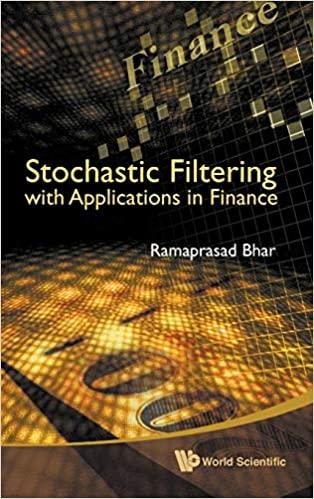Question
Learning to use interest related functions From getting loans from creditors to analyzing investment opportunities, interest rates and growth rates are used extensively in finance.
Learning to use interest related functions
From getting loans from creditors to analyzing investment opportunities, interest rates and growth rates are used extensively in finance. Like other functions you can calculate the interest rates using logarithmic operations and solve through multiple steps of algebra or you can use the relevant Excel functions to compute your answers.
For the purposes of this module you are expected to learn about the following interest rate-related functions:
(1) DISC ; (2) EFFECT ; (3) NOMINAL; (4) RATE
Based on your understanding of these functions, complete the following statements:
| The DISC function is designed to calculate the of a security. | |
| The EFFECT function is designed to calculate the . | |
| The NOMINAL function is designed to calculate . | |
| The RATE function is designed to calculate the interest rate required to . (Note: Two correct answers are available for this question.) |
Consider the following situations where you need to use one of the functions described earlier. Identify which function will be most appropriate to use in each scenario to calculate the relevant interest rate.
Compute the interest rate, or yield, earned by a non-coupon-paying (discount) bond that is purchased on June 1, 2015 and that matures on May 31, 2017. Assume that the price per $100 face value of the bond is $98, the redemption value per $100 of face value is $100, and the basis is 0 (US (NASD) 30/360). Remember: You can express the bonds settlement and redemption dates either as a normal date (e.g., 6/01/2015 enclosed in quotation marks) or as a sequential integer value found using the DATEVALUE function. If you elect to use the sequential integer method, use the DATEVALUE to determine that the appropriate value for June 1, 2015 is 42156, and the corresponding date for May 31, 2017 is 42886. (Note: Round your answer to two decimal places.)
NOMINAL
DISC
EFFECT
RATE
| A | B | |
|---|---|---|
| 1 | Data | Description |
| 2 | Settlement date | 6/1/2015 |
| 3 | Maturity Date | 5/31/2017 |
| 4 | Price | 98 |
| 5 | Redemption value | 100 |
| 6 | Basis | 0 |
| 7 | Interest Rate | = |
| 8 |
% |
Compute the interest rate at which $500 per month payments should grow to accumulate savings of $100,000 in 7 years. Payments are made at the end of each month. (Note: Round your answer to two decimal places.)
EFFECT
NOMINAL
RATE
DISC
| A | B | |
|---|---|---|
| 1 | Data | Description |
| 2 | NPER | 7 x 12 = 84 |
| 3 | PMT | 500 |
| 4 | PV | 0 |
| 5 | FV | 100,000 |
| 6 | [Type] | 0 |
| 7 | Interest Rate | = |
| 8 | =
% |
Compute the stated interest rate on a promotional credit card if the effective interest rate is 12.01%. Assume that interest is compounded (a) semi-annually and (b) quarterly. (Note: Round your answers to two decimal places.)
NOMINAL
DISC
RATE
EFFECT
| A | B | |
|---|---|---|
| 1 | Data | Description |
| 2 | Compounded semi-annually | |
| 3 | Interest Rate | = |
| 4 | =
% | |
| 5 | Compounded quarterly | |
| 6 | Interest Rate | = |
| 7 | =
% | |
| 8 |
Compute the actual interest rate paid or earned on a mortgage loan if the bank states that the nominal rate is 8%, and the interest is compounded (a) semi-annually and (b) quarterly. (Note: Round your answers to two decimal places.)
NOMINAL
DISC
RATE
EFFECT
| A | B | |
|---|---|---|
| 1 | Data | Description |
| 2 | Compounded semi-annually | |
| 3 | Interest Rate | = |
| 4 | =
% | |
| 5 | Compounded quarterly | |
| 6 | Interest Rate | = |
| 7 | =
% | |
| 8 |
Step by Step Solution
There are 3 Steps involved in it
Step: 1

Get Instant Access to Expert-Tailored Solutions
See step-by-step solutions with expert insights and AI powered tools for academic success
Step: 2

Step: 3

Ace Your Homework with AI
Get the answers you need in no time with our AI-driven, step-by-step assistance
Get Started


